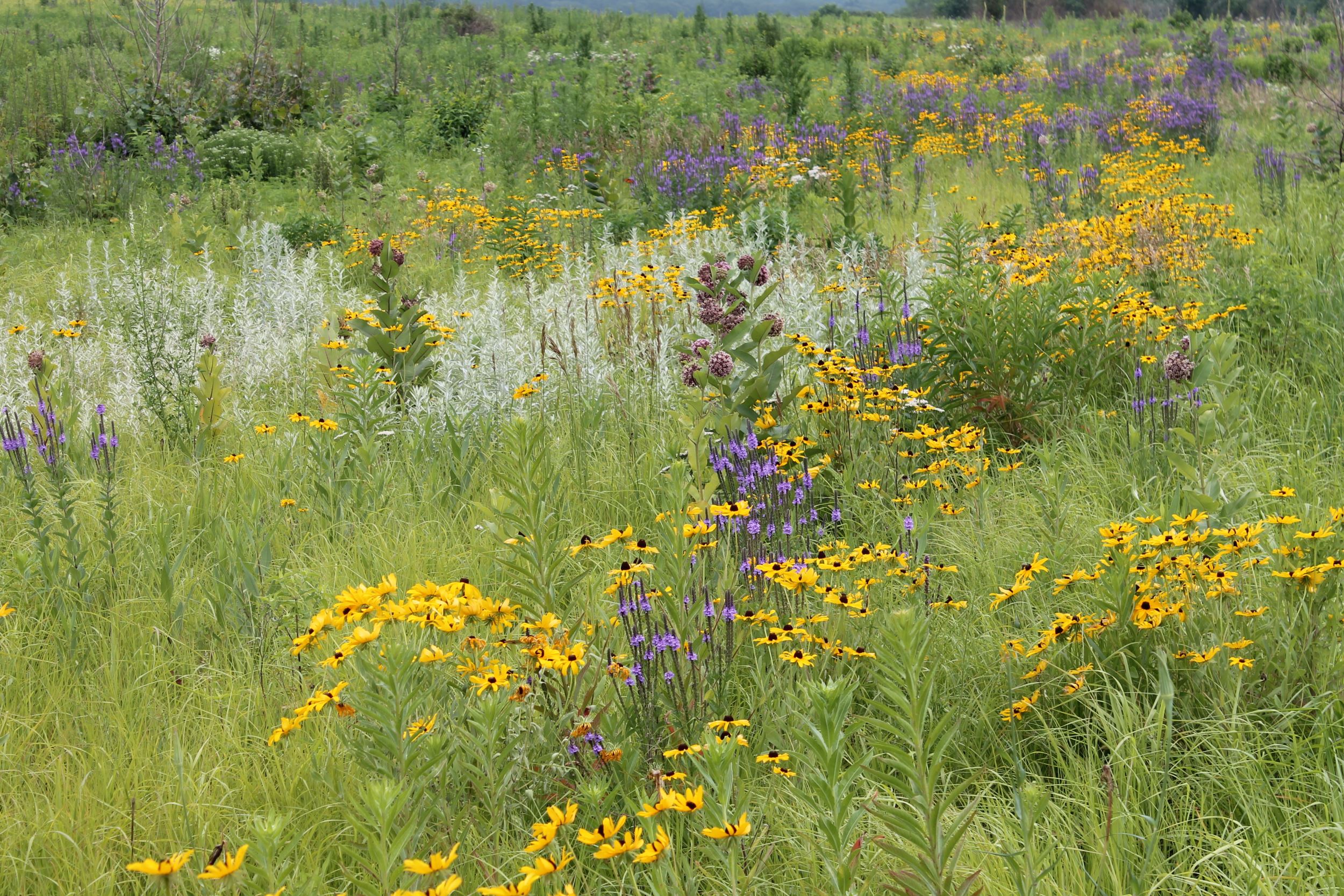Marietta: A prairie years in the making
Posted on July 27, 2016 in Blog

The Marietta Sand Prairie has blossomed into a diverse mix of grasses and forbs after years of restoration work.
Under the blue bowl of an early October sky, volunteers of all ages met to harvest prairie seed at Marietta Sand Prairie State Preserve in Marshall County. Between sipping apple cider and enjoying the cool, clear day, they collected more than 5 pounds of native prairie seed. It was a day more than 10 years in the making: this was the last of the seed needed to for restoring the row crop land adjacent to the state preserve.
Amidst Iowa’s lush tallgrass prairies, there are a few dry sand prairies that support a rich mix of plant, animal, bird and insect life distinctly their own. Remnants of native sand prairie are even rarer than tallgrass prairie remnants. Marietta Sand Prairie State Preserve, a designated wildlife management area,is known as one of Iowa’s finest remaining examples of remnant sand prairie. But at just 17 acres, it faced constant pressure from invasive weeds and pesticide drift from surrounding land. Moreover, it wasn’t large enough to support the most sensitive, threatened species – like grassland birds needing large tracts of prairie grasses to successfully reproduce and thrive.
So, in 2005 when , in 2005, the opportunity arose to purchase the 211 acres next to the state preserve – an area including remnant sand prairie, a fen wetland and sandy and lowland crop fields – Iowa Natural Heritage Foundation immediately seized the chance. Combining land protection, stewardship and volunteer efforts, Marietta Sand Prairie was INHF’s first truly comprehensive project. INHF President Joe McGovern, who was Land Stewardship Director when the project began, reflected that INHF could have simply bought the remnant prairie areas of the adjoining land. Instead, INHF decided to protect the entire area, crop fields and all, bringing together a group of strong and passionate partners to restore this land around the state preserve.
"It will take years to establish the prairie and some care and attention long-term to keep it whole and healthy," McGovern said at the time of the purchase. "But it’s worth a little time and cost to do it right." So even after the land protection was complete, INHF stayed involved in the restoration of the prairie — dedicating hundreds of staff and volunteer hours to picking and planting.
Reestablishing prairie on the crop ground was a deliberate process; INHF and Marshall County Conservation Board (CCB) knew that the time and attention was key to establishing the high quality planting the area deserved. As Marshall CCB Director Mike Stegmann observed, "in any natural area, it is critically important to provide as much diversity as possible to support insect, bird and animal life." Though efforts at managing the area will continue through mowing and prescribed burns by Marshall CCB, the results so far, Stegmann says, have been exquisite.
.jpg)
In January, INHF staffers spread prairie seed, including this common milkweed, on the last section of Marietta Sand Prairie to be restored.
A Satisfying Day
On the last Friday in January 2016, a small group of INHF staff members and interns braved the cold to spread the last handfuls of prairie seed at Marietta Sand Prairie WMA State Preserve. Despite the rawness of the day, the sun was bright, and the wind only helped in scattering the fluffs of seed –gathered by those fall volunteers only a few months before — across the wide, white fields.
All of the prairie seed used to restore the crop fields adjacent to Marietta Sand Prairie State Preserve came from other prairie remnants. The prairie seed used to restore the sandy crop fields was gathered from the state preserve itself – largely by volunteers, whose dedication and hard work bring continual energy and excitement to the project.
Indeed, Marietta Sand Prairie is the type of project that draws support from all corners, bringing together an incredible diversity of groups. Multiple chapters of Pheasants Forever contributed their support, and the Iowa Prairie Network donated the proceeds of their annual auction. A $50,000 challenge grant from the Martha-Ellen Tye Foundation in Marshalltown inspired individual donations from across the state. This outpouring of support helped Marshall County Conservation CCB secure a $200,000 county Resource Enhancement and Protection (REAP) grant for the project.
And, for the majority of contributors, their involvement with Marietta Sand Prairie did not end with the property’s acquisition. Lots of donors have come out and helped us gather seed, and they have visited throughout the restoration process, Mike Stegmann said. "Something about Marietta touches people in an unexpected way. I think it’s the beauty and peacefulness of the place. In Iowa, we don’t have an ocean or beachfront where you can let your mind wander. We have the prairie."